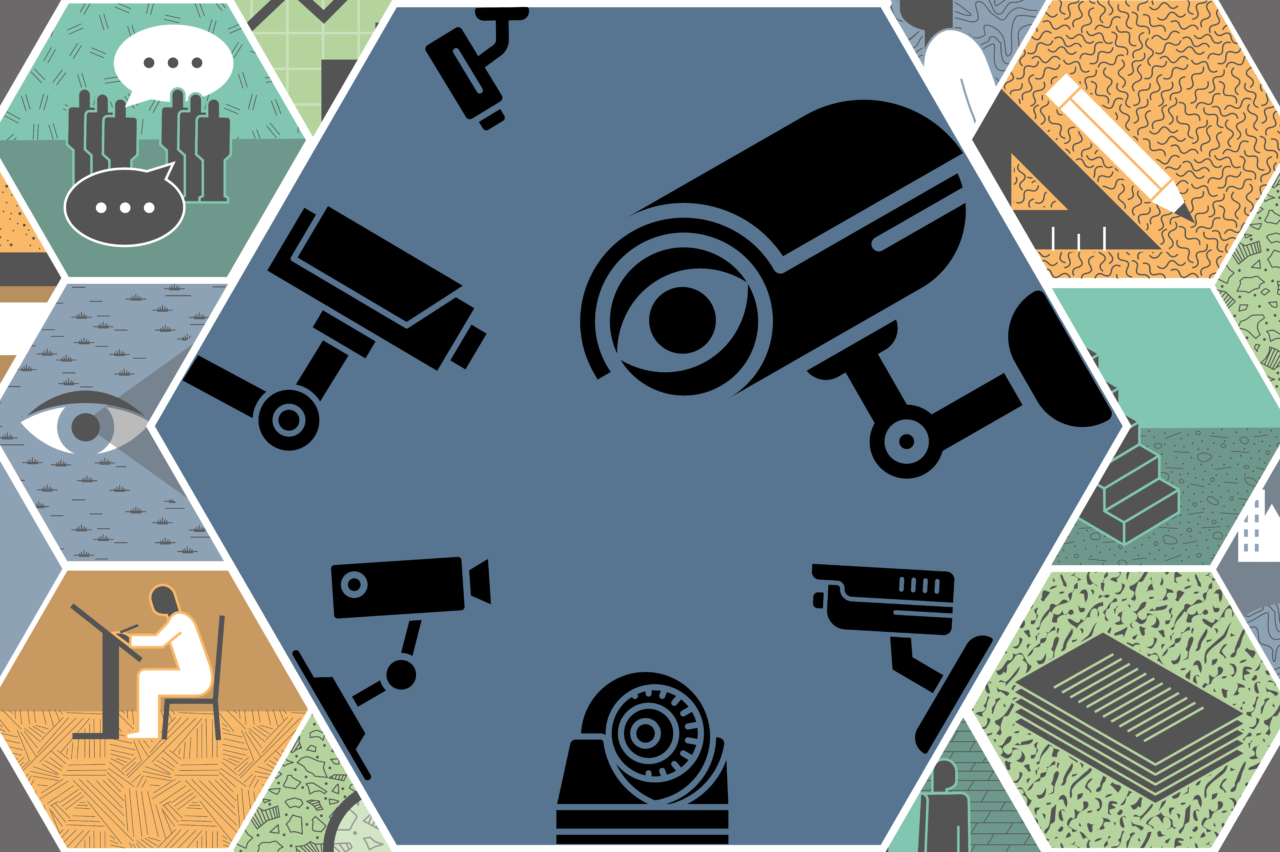-
April 22, 2022Public Space Research and Design: Gauging Security Inequities

Text by Michele Rafferty
An online program hosted by the American Institute of Architects New York Chapter (AIANY) and its Center for Architecture addressed public space research and design, exploring how to gauge security inequities and create inclusive and equitable public spaces.
“I would be remiss to say that every single person in New York City experiences public space in the same way when it comes to safety and security,” said moderator Fauzia Khanani, the Principal Architect of the award-winning New York firm Studio Fōr and the co-chair of the AIA New York’s Social Science and Architecture Committee. “Historically, the needs and perspectives of every community member have been rarely considered and incorporated into public space design.”
She encouraged the group to consider how design decisions and data can lead to creating equity in public spaces.
Linnea Tillett, the founder of Tillett Lighting Design and Associates, has lectured widely on the subject, asking whether it is possible to design a nighttime public space where everyone feels safe and secure. “My vigorous answer,” she said, “is no,” because feelings of personal safety are “deeply complicated and personal… but, design research and implementation do have the potential to create nighttime spaces which are warm and welcoming.”
Sharon Cotton, Tamara Greenfield, Layman Lee, and Isabel Saffon gave a collaborative presentation on how civic engagement can help drive the implementation of public health and public safety measures. An active community member in the Wagner Houses, a public housing development in East Harlem, Cotton has participated in community service going back 20 years as a member of the Neighborhood Watch; her most recent role has been as the Sergeant of Arms for the Wagner Tenants Association Board. Greenfield is the Deputy Executive Director of the Mayor’s Office of Neighborhood Safety. Lee is the Project Director of the Neighborhood Safety Initiative (NSI) at the Center for Court Innovation, a lead implementer of the Mayor’s Action Plan for Neighborhood Safety (MAP), and Saffon is currently the Associate Director of Neighborhood Equity Design at the Center for Innovation at the NSI, which also supports MAP, reimagining public safety through civic participation.
Greenfield spoke about how the NSI works to build out resident networks, which help transform public spaces into safe public spaces. The Mayor’s Action Plan, which the group works to implement, was selected in 2014 as a response to a spike in violence in New York City public housing. The NSI builds residence teams by recruiting 15 residents from each development, and providing training and stipends.
NeighborhoodStat events engage the community in building public safety decision-making processes through a participatory process. Part of this involves residents discussing how to best invest $30,000 of funds made available by the initiative in a way that improves public safety in their communities. Saffon and her team collect data at the NeighborhodStat events that they use to tailor the process to better fit a diverse community. The action plans resulting from this process are “quick, tangible wins while we wait for long term policy change to happen,” Lee said.
Cotton laid out the specifics of some of these action plan success stories at Wagner Houses, where at the time of its implementation, the median income was around $25,000 a year. A group of community activists cleaned up a green space. Before they took action, it was unsanitary and unsafe. At night it was dark, people slept there, and it was a haven for drug dealing. After consulting with the residents, they all decided that it was the area they wanted to make safer. So the resident-activists ran night and day audits to collect data on activity in the green space.
Since implementing their action plan, the space has hosted talent shows, food giveaways, school bag giveaways, Christmas giveaways, and a variety of programs that foster community gatherings.
The audience asked Cotton about difficulties she had faced in completing projects. She said getting the timing right was often a “Some took a year, some two years” situation and that MAP was the first time she really saw progress.
In response to a question about the best ways to collect data, Lee explained that, while surveys are a ubiquitous tool, they would often run into survey fatigue. One way to counteract this fatigue is by offering monetary incentives for survey participation and having dedicated people collect survey data. For example, at an event where they were handing out food and knew there would be a crowd, she would make sure there was somebody on the food line to hand out surveys.
“Designers can be advocates when they see things happening which are not to the benefit of most… communities,” Tillett said. Smart Lighting could potentially be used as a form of surveillance. She emphasized that “these are choices which should not be made without much cooperation and collaboration,” and that “designers… [need to be] willing to work within the institutions and not stand outside it.”
Join the AIANY Social Science + Architecture Committee or drop into one of our monthly meetings. They are open to the public and typically occur at 8:30 am on the fourth Thursday of each month.
About the Author
Michele Rafferty is a freelance content coordinator working with PLASTARC, a consultancy that uses analysis and data to help companies integrate their employees’ and clients’ needs, while organizing and leveraging their physical space.
Social Science and Architecture
The Social Science and Architecture Committee was formed in January 2016 with the goal of bringing together professionals and students from architecture, social science, and other fields to discuss, collaborate, and facilitate programs for the community. The meeting offers a place to exchange ideas related to social science and architecture, address topics of interest to the attendees, and to plan AIA panels on related topics. The Committee meets monthly and is open to anyone who would like to attend. Meetings are held the fourth Friday of every month from 8:30-10:00 AM.







